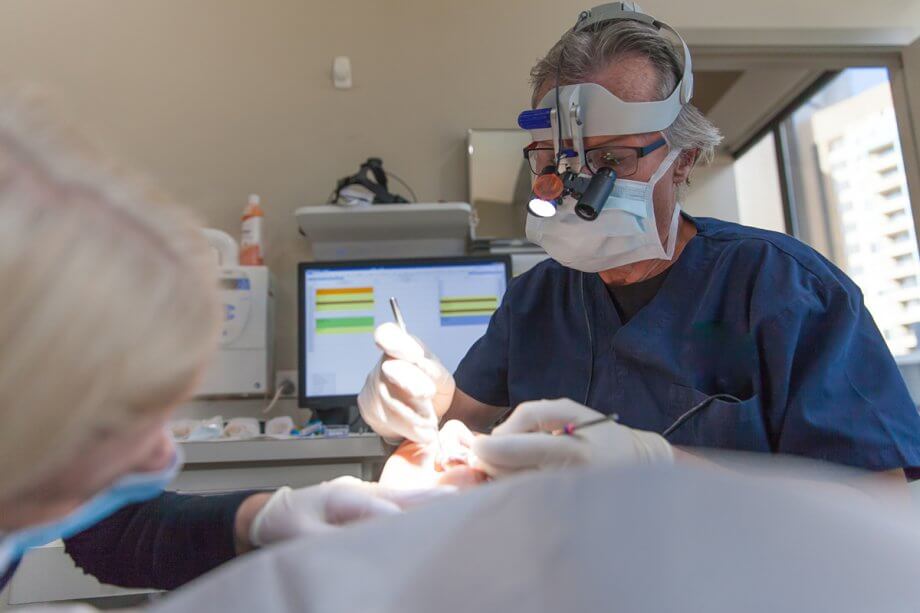When a tooth is severely decayed or damaged, a dental crown is a potential restorative option. But in some cases there is not enough tooth material left to attach a crown. In this case, crown lengthening may be necessary to uncover more tooth material to make room for a crown.
Is crown lengthening worth it, or should the tooth be extracted? This is a question that many patients ask, and the answer depends on a few factors. Consider the following information to determine whether or not crown lengthening is the best option for you.
What is a Dental Crown?
A dental crown is a protective covering placed over a damaged tooth. It is shaped like a natural tooth and may be made out of porcelain or metal. The existing tooth material must be reduced in some cases and reshaped to be ready to receive a crown. In other cases there isn’t enough tooth material remaining to fit a crown, which is when crown lengthening becomes necessary.
What is Crown Lengthening?
Crown lengthening is the process of removing gum tissue in order to expose more of the tooth material. This can be done for cosmetic purposes to improve the appearance of the teeth, or for dental health purposes to make room for a crown. Crown lengthening can be performed on a single tooth or on multiple teeth that need to have gum tissue removed.
What is Laser Dentistry?
The latest technology in crown lengthening involves the use of a dental laser to remove gum tissue. A dental laser vaporizes the tissue rather than cutting it and naturally cauterizes it to reduce bleeding and inflammation. Crown lengthening performed with a dental laser is less invasive and allows for faster recovery.
Downsides of Extraction
Without crown lengthening to make room for a crown, the only alternative is to extract the tooth. There are many reasons why extracting the tooth is less desirable than a crown restoration, such as:
- Leaves a gap. If you have the tooth extracted without replacing it, you’ll have a gap in your teeth that may be noticeable when you smile and talk.
- Other teeth shift out of place. Leaving a gap in your teeth allows the other teeth to shift out of place and become misaligned in your mouth.
- Replacement teeth cost more. The recommended option after extraction is to replace the tooth with a prosthetic. Dental bridges and implants cost more than crown lengthening and dental crowns.
- Longer process. The process of extracting the tooth and replacing it with a prosthetic typically takes longer than crown lengthening and placing a crown.
Benefits of Crown Lengthening
Crown lengthening in preparation for crown placement offers many benefits:
- Preserves the natural root. A dental crown allows the natural root of the tooth to stay in place, which keeps the tooth securely anchored in the jaw.
- Provides a natural appearance. A tooth restored with a porcelain crown blends in with the rest of your teeth. A crown can be made to match the shape, size, and color of the original tooth.
- Fills the gap between your teeth. Crown lengthening allows for a crown to be placed to fill the gap between your teeth where the missing tooth material would be.
- Avoids replacement teeth. When crown lengthening makes it possible to get a crown, you avoid having to replace the tooth with a prosthetic.
Who Performs Crown Lengthening?
Crown lengthening is best performed by a skilled periodontist. A periodontist is a dentist who specializes in conditions and procedures affecting the support structures for the teeth, including the gums. Hudson Valley Periodontics & Implantology provides crown lengthening procedures using laser dentistry for best results and faster recovery. If crown lengthening can make it possible for you to get a dental crown, we recommend this option over extraction in most cases.
To learn more, call 845-623-6666 or contact us today to schedule an appointment.

